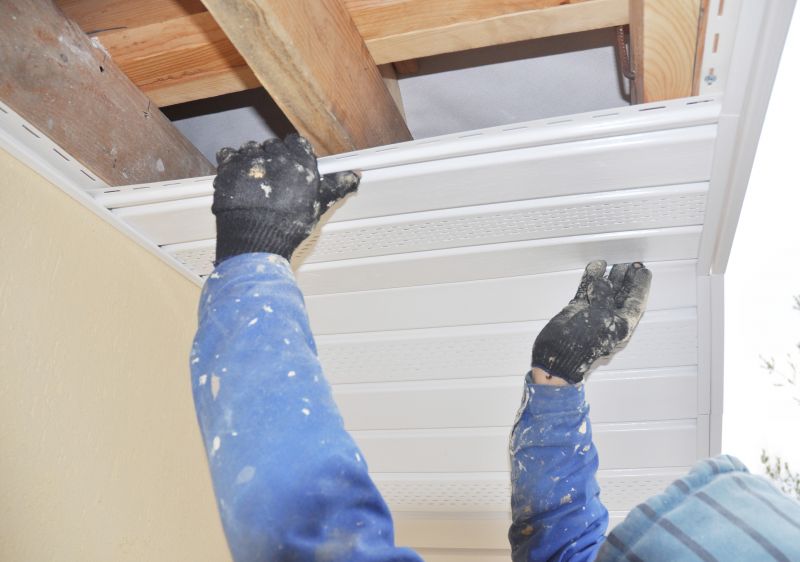Favorite Tools For Fascia Repair Service Providers
Browse a curated selection of top-performing tools that streamline fascia repair procedures for practitioners.
 Fascia repair is an important aspect of maintaining overall musculoskeletal health, focusing on the connective tissue that surrounds muscles, bones, and organs. When fascia becomes tight, restricted, or injured, it can contribute to discomfort and limited mobility. A variety of products are available to support fascia health and aid in its repair, including massage tools, foam rollers, and specialized therapy devices. These tools are designed to help release tension, improve flexibility, and promote circulation in affected areas.
Fascia repair is an important aspect of maintaining overall musculoskeletal health, focusing on the connective tissue that surrounds muscles, bones, and organs. When fascia becomes tight, restricted, or injured, it can contribute to discomfort and limited mobility. A variety of products are available to support fascia health and aid in its repair, including massage tools, foam rollers, and specialized therapy devices. These tools are designed to help release tension, improve flexibility, and promote circulation in affected areas.
Top Overall Option
Multi-Use Fascia Release Tool
A versatile fascia release tool designed with ergonomic handles and multiple textured surfaces to target various muscle groups. Its durable construction and adaptable design make it suitable for self-myofascial release, helping users apply controlled pressure to areas needing attention. Ideal for both beginners and experienced practitioners seeking a comprehensive solution for fascia maintenance.
Types of Products For Fascia Repair Service
Foam Rollers
Cylindrical foam rollers help in gentle fascia stretching and muscle release, suitable for large muscle groups.
Massage Balls
Small, textured balls designed to target specific trigger points and adhesions in fascia.
Handheld Massage Devices
Electric or manual devices that provide targeted deep tissue massage to fascia and muscles.
Percussion Massagers
Handheld devices that deliver percussive therapy to help relax tight fascia and improve circulation.
Trigger Point Tools
Specialized tools designed to apply pressure to specific trigger points for fascia release.
Myofascial Release Tools
Devices crafted to facilitate deep tissue release and fascia mobilization.
Stretching Straps
Flexible straps that assist in stretching fascia and improving flexibility.
Therapy Balls
Larger balls used for comprehensive fascia and muscle therapy over broad areas.
Compression Wraps
Supportive wraps that provide compression to fascia and soft tissues during recovery.
Gel and Massage Oils
Lubricants that enhance glide and comfort during fascia release techniques.
Vibrating Massage Pads
Pads with vibration features designed to stimulate fascia and underlying tissues.
Infrared Therapy Devices
Tools utilizing infrared light to promote fascia healing and tissue relaxation.
Electrostimulation Devices
Electrotherapy tools that help stimulate fascia and muscle tissues for healing.
Self-Massage Rollers
Compact rollers designed for targeted self-massage and fascia release.
Kinesiology Tape
Elastic therapeutic tape used to support fascia and promote circulation.
Popular Choices
Widely used for broad fascia release, suitable for various body parts.
Textured balls that target trigger points and adhesions in fascia.
Popular for their deep tissue stimulation and ease of use.
Devices combining vibration and percussion for comprehensive fascia therapy.
Specialized foam rollers designed for pinpoint fascia release.
Ergonomic tool for reaching hard-to-access fascia areas.
Portable devices offering targeted fascia and muscle relief.
Pads that provide heat therapy to relax fascia tissues.
Elastomeric sleeves that deliver compression for fascia support.
Long, lightweight sticks for self-administered fascia work.
Flexible tape for fascia support and pain management.
Mats with embedded massage nodes for fascia stimulation during rest.
Products to facilitate smooth movement during self-massage.
Proper fascia care often involves consistent use of targeted products that can be incorporated into daily routines or professional therapy sessions. Self-myofascial release techniques, for example, utilize specific tools to gently stretch and mobilize fascia, helping to alleviate adhesions and promote tissue hydration. Combining these tools with proper movement and stretching can enhance overall effectiveness. It is important to choose products that suit individual needs and comfort levels, as fascia health can vary greatly from person to person.
When selecting products for fascia repair, considerations such as material quality, ergonomic design, and ease of use are essential. Some tools are designed for specific body regions, while others offer versatile applications. Consulting with a healthcare professional can help determine the most appropriate products for personal needs, especially for those recovering from injury or managing chronic pain. Regular use, along with proper technique, can support ongoing fascia health and contribute to improved mobility and comfort over time.
Investing in quality fascia repair products can be a valuable addition to a wellness routine. Whether used at home or by professionals, these tools can facilitate effective self-care and complement other therapeutic interventions. As fascia health continues to gain recognition for its role in overall well-being, a variety of innovative products are emerging to meet diverse needs and preferences.
Key Buying Considerations
- Material quality and durability of the product.
- Ergonomic design for ease of use and comfort.
- Specific body areas or fascia issues you aim to target.
- Adjustability or multiple settings for personalized therapy.
- Portability and size for convenience and storage.
- Ease of cleaning and maintenance of the product.
- Compatibility with existing therapy routines or equipment.
- User reviews and ratings to gauge effectiveness and satisfaction.
- Availability of replacement parts or accessories.
- Price point relative to features and quality.
- Potential for versatility across different muscle groups.
- Ease of learning proper technique and application.
- Compatibility with professional therapy sessions if applicable.
- Consideration of any medical advice or restrictions.
- Availability of customer support or warranty options.
This page contains affiliate links. We may earn a commission if you purchase through these links, at no additional cost to you.
